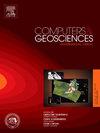Automatic detection of ditches and natural streams from digital elevation models using deep learning
IF 4.2
2区 地球科学
Q1 COMPUTER SCIENCE, INTERDISCIPLINARY APPLICATIONS
引用次数: 0
Abstract
Policies focused on waterbody protection and restoration have been suggested to European Union member countries for some time, but to adopt these policies on a large scale the quality of small water channel maps needs considerable improvement. We developed methods to detect and classify small stream and ditch channels using airborne laser scanning and deep learning. The research questions covered the influence of the resolution of the digital elevation model on channel extraction, the efficacy of different terrain indices to identify channels, the potential advantages of combining indices, and the performance of a U-net model in mapping both ditches and stream channels. Models trained in finer resolutions were more accurate than models trained with coarser resolutions. No single terrain index consistently outperformed all others, but some combinations of indices had higher MCC values. Natural stream channels were not classified to the same extent as ditches. The model trained on the 0.5 m resolution had the most balanced performance using a combination of indices trained using the dataset with both types of channel separately. The deep learning model outperformed traditional mapping methods for ditches, increasing the recall from less than 10% to over 92%, while the recall for natural channels was around 71%. However, despite the successful detection of ditches, the models frequently misclassified streams as ditches. This poses a challenge, as natural channels are protected under land use management practices, while ditches are not.
利用深度学习从数字高程模型自动检测沟渠和自然溪流
一段时间以来,向欧洲联盟成员国提出了以水体保护和恢复为重点的政策,但要大规模采用这些政策,小水道图的质量需要得到相当大的改善。我们开发了使用机载激光扫描和深度学习来检测和分类小溪和沟渠通道的方法。研究问题包括数字高程模型分辨率对河道提取的影响、不同地形指标识别河道的有效性、组合指标的潜在优势,以及U-net模型在绘制沟渠和河流河道中的性能。在精细分辨率下训练的模型比在粗糙分辨率下训练的模型更准确。没有单一地形指数的MCC值始终优于所有其他地形指数,但某些指数组合具有更高的MCC值。天然河道的分类程度与沟渠不同。使用分别使用两种类型通道的数据集训练的指数组合,在0.5 m分辨率上训练的模型具有最平衡的性能。深度学习模型优于传统的沟渠映射方法,将召回率从不到10%提高到92%以上,而自然沟渠的召回率约为71%。然而,尽管成功地检测了沟渠,但模型经常将溪流错误地分类为沟渠。这带来了挑战,因为自然渠道受到土地使用管理措施的保护,而沟渠则没有。
本文章由计算机程序翻译,如有差异,请以英文原文为准。
求助全文
约1分钟内获得全文
求助全文
来源期刊

Computers & Geosciences
地学-地球科学综合
CiteScore
9.30
自引率
6.80%
发文量
164
审稿时长
3.4 months
期刊介绍:
Computers & Geosciences publishes high impact, original research at the interface between Computer Sciences and Geosciences. Publications should apply modern computer science paradigms, whether computational or informatics-based, to address problems in the geosciences.
 求助内容:
求助内容: 应助结果提醒方式:
应助结果提醒方式:


